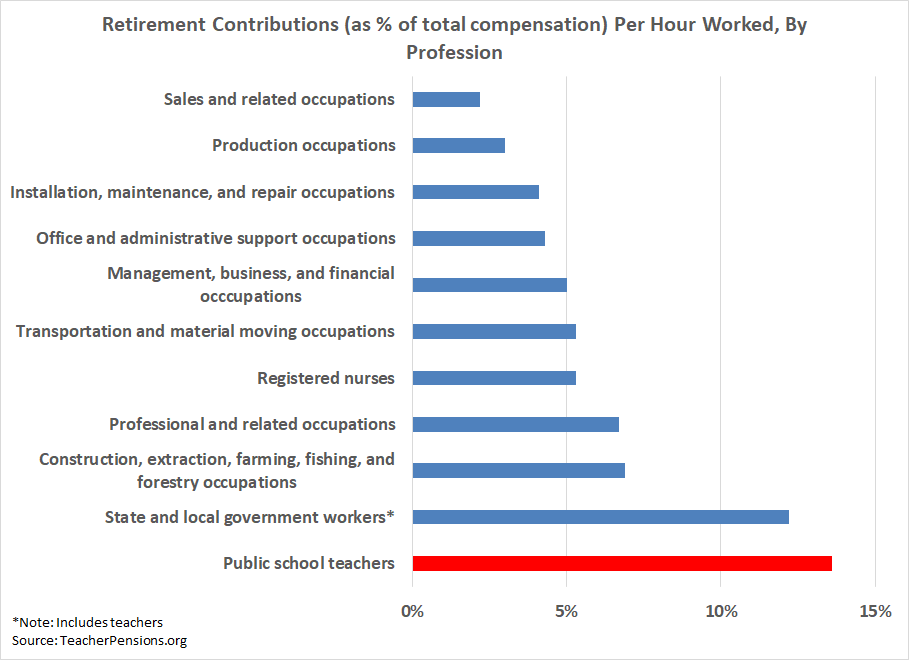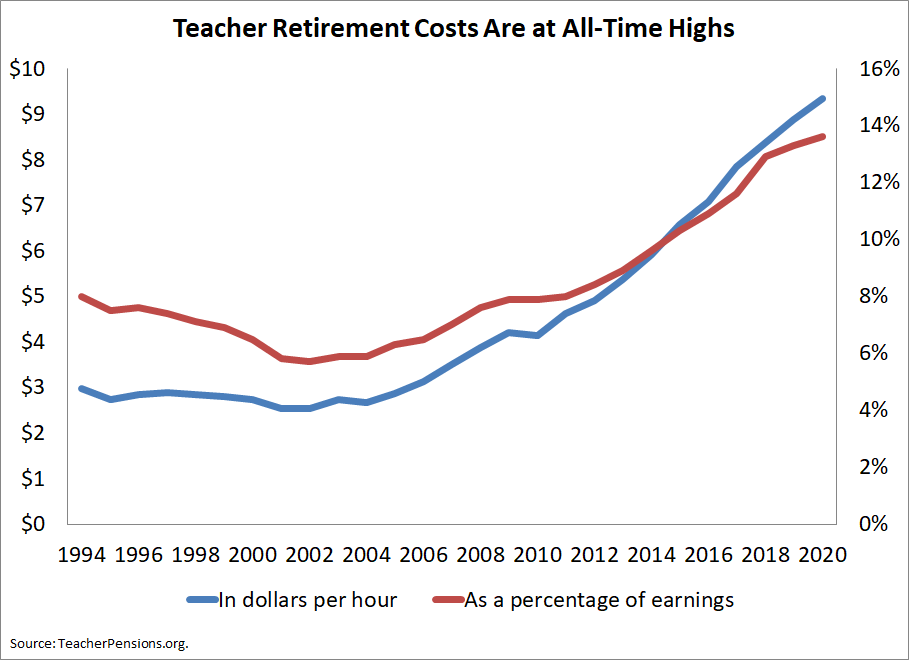
After lagging behind for much of the decade, average teacher salaries finished with strong gains in the 2019-2020 school year. Based on the new data from the Bureau of Labor Statistics, public school teacher salaries rose by 3.2 percent from March 2019 to March 2020, well above the 1.5 percent increase in the consumer price index.
In fact, teacher salaries rose over the entire decade. From 2010 to 2020, average teacher salaries rose by 19.3 percent, slightly above the rate of inflation.
But before celebrating too much, teachers may be miffed to find out that their total compensation increased even more, by 28.5 percent over the same time period. In real terms, teachers got a tiny bit more in their pockets even as employers were paying significantly more money to employ them.
What's driving this disconnect? Benefits costs. Health care and pension payments rose much faster than teacher salaries did and, as a result, benefits are eating up a growing share of teacher compensation. Teacher health care costs rose by 27.6 percent over the course of the decade, well above the rates for wages or inflation, but the real culprit was teacher pensions. Over the last decade, teacher retirement costs soared by 126.4 percent.
Back in 2016, I dubbed this trend the "Pension Pac-Man" and warned that teachers already had higher retirement costs than any other employee group in the American economy. The trend has only continued since then. While the average civilian employee receives $1.97 in retirement benefits per hour of work, public school districts pay retirement costs of $9.35 per hour. Even if you look at it as a percentage of their total compensation package, teacher retirement benefits eat up two and a half times as much as other workers (13.6 versus 5.2 percent). In terms of retirement costs, teachers are even starting to pull away from other state and local government employees.
Not only are retirement costs for teachers high compared to other professions, they're also high compared to historical trends. Going back to 1994, teacher retirement costs have never been higher, in either dollar or percentage terms. At the end of 1990s, as pension fund assets ballooned in tandem with rising stock prices, teacher retirement costs per hour briefly dipped as a share of teachers’ total compensation package. But beginning in the ealry 2000s, pension funds needed an infusion of new money. That trend has continued to accelerate in recent years as pension costs continue to eat up a higher and higher share of teacher compensation.
Unfortunately for teachers, the rising costs of their retirement systems do not reflect improved benefits. Today, the costs of paying down unfunded liabilities, not benefits for active teachers, make up the biggest proportion of employer retirement costs.
Going forward, it's possible that salaries could continue to rise thanks to recently negotiated teacher contracts. Even in the midst of the coronavirus pandemic, some leaders have made good on their promises to find money for teachers salaries. But the Pension Pac-Man continues to eat. And without a change change, retirement costs will continue to eat further and further into school district budgets.

